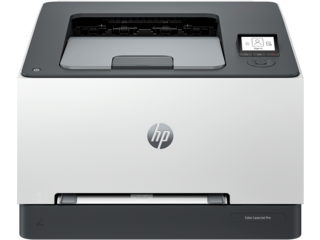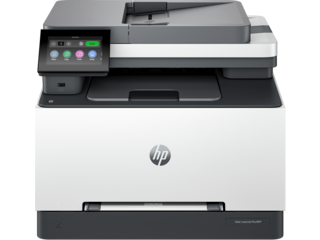If you use a wireless internet network in your home or office, you’ve probably heard the terms “modem” and “router” from time to time. While some people use the two words interchangeably, they are not the same thing. A modem brings internet service into the home from internet service providers (ISPs), while a router delivers that internet connection to the devices in your home, allowing them to connect wirelessly via WiFi or through Ethernet cables.
In this article, we’ll discuss the key differences between modems and routers, what each device does to provide your WiFi service, and how they work together to deliver the best coverage and performance. Understanding these networking essentials will help you get the most out of your home internet setup.
How does a modem provide internet access?
To have an internet connection in your home, you need a modem. Your ISP should have provided you with one. The modem typically looks like a small box with a cable leading outside to connect to your cable, fixed wireless, satellite, or
fiber internet service. If you have DSL service, the modem will connect to a phone line instead.
The modem also has a cord that connects to your router, along with a power cable that plugs into an outlet. For a more stable connection, you can use an Ethernet cable for a hard-wired connection from the modem to the router. The modem connects your home network to the outside world, translating and encoding data to send and receive information from the internet. If the modem isn’t functioning properly, receiving power, or securely connected to the incoming service line, you won’t be able to access the internet for browsing, streaming, and everything else you do online.
Essentially, the modem acts as a bridge between your ISP’s network and your home network. It converts the signal from your provider into a form that your devices can understand and use. Without a properly functioning modem, you won’t be able to connect to the internet at all, even if you have a router set up.
Intel® Core™ i7 processor
WiFi 6 connectivity
16GB RAM, 1TB SSD
Windows 11 Pro
EliteBook 840 G10
$2,000.99
AMD Ryzen™ 7 PRO
32GB RAM, 1TB SSD
WiFi 6E ready
WUXGA display
EliteBook 865 G10
$1,774.99
26 ppm color & black
Wireless printing
Mobile/ethernet ready
Wolf Pro Security
Color LaserJet Pro 3201dw
$339.00
What is a router used for?
The router may look similar to a modem but serves a different purpose. A wireless router takes the internet connection provided by the modem and creates a local area network (LAN). It then splits that connection into multiple lines of service for all the devices in your home - tablets, laptops, smart TVs, smartphones, and more. The router allows these multiple devices, including wireless ones, to share files and peripherals like printers. Without a router, you can’t have wireless internet.
The router connects the incoming internet via cable from your modem to your various devices. On your wireless router, you’ll see a specific port for this WAN (wide area network) connection. You’ll also find several Ethernet ports to directly connect devices with a wired connection. However, if you want everything to connect via WiFi, allowing multiple devices to access the internet seamlessly, you may not use any of these Ethernet ports.
Many routers also have external antennas to help broadcast the wireless signal. Make sure these are tightly connected, pointing upwards, and unobstructed for the best wireless coverage and performance. Some high-end routers have internal antennas, so you may not see them, but they serve the same purpose.
Keep in mind that the router can only split the internet connection you have between your connected devices - it cannot increase your total internet bandwidth or speed. If you have many devices running simultaneously, the connection to each one may slow down, especially if they are all trying to perform high-bandwidth activities like streaming video or downloading large files.
This is where having access to your router’s administrative tools comes in handy. Many routers let you prioritize which devices get service first, allocating more bandwidth to important activities. Other helpful router features can include:
- Parental controls to restrict access for certain devices or users
- Uptime and performance reports to monitor your network
- Scheduling options to automatically enable or disable WiFi at certain times
- Enhanced security options like firewalls and guest network access
- Gaming-specific features like ping reduction and traffic prioritization
- VPN compatibility to securely connect to remote networks
- Quality of Service (QoS) settings to manage traffic flow
By logging into your router’s control panel or app, you can customize these settings to get the most out of your home network and keep it running smoothly and securely. Some routers even offer voice control through virtual assistants like Amazon Alexa or Google Assistant for added convenience.
Should you rent or buy your router?
If you rent a router from your ISP, you may not have access to the extra administrative tools and customization options mentioned above. The router may be locked down or have limited functionality. Buying your own router can give you more control over your home network and wireless experience, with the ability to configure advanced settings and get the latest technology and security features.
⚡ Best-Selling Business All-in-One
Top Pick!
HP Color LaserJet Pro MFP 3301fdw
- Fast 26 ppm color printing with wireless connectivity
- Print, copy, scan, fax with mobile/ethernet support
- HP Wolf Pro Security and reliable WiFi
Color MFP | Wireless | Security features | 26 ppm
On the other hand, if you’re less tech-savvy or want your ISP to handle any router issues or troubleshooting, renting their unit and giving them administrator access may be preferable. You won’t have to worry about compatibility, updates, or maintenance, as the provider will take care of all that for you.
Before agreeing to an ISP router rental, be sure to check the fine print. Some providers may require a minimum rental period, expect you to cover lost or damaged equipment fees, or charge monthly rates that quickly exceed the value of the router itself. Understand exactly what you’re paying for and any additional terms before signing a contract. Buying your own router outright can often be more cost-effective in the long run.
Do I need both a modem and router?
Since a modem’s sole purpose is to provide that initial internet access point, you could theoretically connect it directly to a single wired device like a
desktop computer if that’s the only internet-connected device you have, effectively using the modem as a standalone unit. This setup is simple but comes with limitations such as single device connectivity, lack of wireless access, and lack of built-in security features.
Most households, however, have multiple devices needing internet, and will therefore require a separate router as well, to create that local network and provide WiFi capabilities. Using your own router instead of a combination unit or renting from your ISP also has benefits such as:
- More control over network settings and security
- Ability to connect a variety of wired and wireless devices
- Potential for better performance with newer technology like WiFi 6
- Flexibility to choose your own equipment and upgrade when needed
- Possible cost savings compared to monthly rental fees
Some ISPs offer a combination modem-router unit, known as a gateway. You’ll have all the same connections but only need to power and configure one device, which can be convenient for simplicity and space-saving. However, there are some potential downsides to these combo units compared to using separate devices:
- Limited choice in equipment, as you can only use the gateway model provided by your ISP
- Inability to upgrade components individually as technology advances
- Less control over router-specific settings and features
- Potential for higher latency and slower speeds, especially on wireless connections
- Possibility of entire network going down if the gateway malfunctions
Opting for a separate modem and router can lead to a more reliable, secure, and flexible home network setup. It also opens up possibilities for advanced features and potentially saving money by eliminating monthly rental fees. Consider your specific needs, budget, and technical comfort level when deciding whether to go with a gateway or separate modem and router. If an all-in-one device isn’t for you, ask your ISP about compatible modems and any restrictions on using your own equipment.
Upgrade your home network with HP
Ready to improve your home office setup or small business network? HP has a great selection of routers,
computers, printers, and accessories to boost your connectivity and productivity. Here are a few top picks:
- HP OfficeJet Pro 8210 Wireless Inkjet Printer - Fast, efficient printing from anywhere with easy mobile connectivity and impressive print speeds up to 22 ppm
- HP EliteBook x360 1040 14" 2-in-1 Touchscreen Laptop - Sleek convertible design with secure, high-performance Intel® Core™ i7 processor, up to 16GB RAM, and long battery life
- HP EliteDesk 800 G8 Small Form Factor PC- Compact, enterprise-grade desktop with 11th Gen Intel® Core™ i7 processor, up to 1TB SSD, optional WiFi 6, and VPro platform for enhanced manageability and security
Choosing the right devices and properly configuring your modem and router is key to a frustration-free computing experience, whether you’re working from home,
gaming online, taking remote classes, or streaming your favorite entertainment. Be sure to check compatibility and specifications to ensure all your tech works together seamlessly.
For personalized product recommendations tailored to your needs and budget, just
call an HP sales rep or
chat with one online. No matter your network setup or devices, HP has the tools and expertise to help you stay connected and productive.
About the Author
Linsey Knerl is a contributing writer for HP® Tech Takes. Linsey is a Midwest-based author, public speaker, and member of the ASJA. She has a passion for helping consumers and small business owners do more with their resources via the latest tech solutions.






















